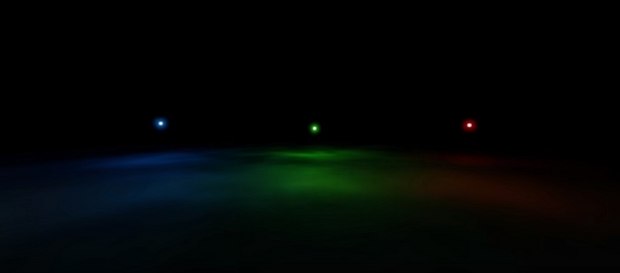Motion design studio Swordfish and audio house Source Sound design an immersive, animated company logo for VR environments for virtual reality technology startup Pixvana.
SEATTLE, WA -- Pixvana, a virtual reality (VR) technology startup, recently enlisted motion design studio Swordfish and audio house Source Sound to design an immersive, animated company logo for VR environments. Pixvana is developing a cloud-based technology platform to improve the immersive video viewing experience for VR and augmented reality (AR) applications across a broad set of viewing devices. The new logo was created in :25, :09, and :05 versions and is designed to play on any headset ahead of content created with Pixvana technology.
“VR logo animations differ from traditional 2D logo animations in that there’s a vast canvas and the viewer needs time to orient themselves to the 360-degree environment before any reveal happens. We also needed to incorporate spatial clues through both visuals and sound,” explained Matt Silverman, Executive Creative Director at Swordfish.
In the logo animation, red, blue, and green pixels appear one by one before aligning and exploding in a burst of energy, with the remnants then coalescing to spell “Pixvana.” With VR still in its infancy for content creation workflows, the Swordfish team conducted R&D to determine the most efficient project workflow, which, with a forward-thinking 12K 60 FPS deliverable, was particularly demanding even for VR. The Swordfish team began their discovery phase in Autodesk Maya, working with particles and the new MASH motion graphics toolset.
“Rendering with V-Ray in Maya gave us a solid pipeline for outputting ODS (Omni-Directional Stereo) animations,” explained Silverman, “but we ran into design issues which we would normally solve in Adobe After Effects. Due to the fact that we needed to deliver 12K stereo, we could not find an efficient way to work with low-resolution comps and accurately up-res for final delivery.”
To solve this problem, Swordfish artists ultimately leveraged an efficient workflow comprised of Cinema 4D with X-Particles to design the animation, along with After Effects which was limited to straight compositing. Cinema 4D allowed artists to run particle simulations in low resolution for efficient review before successfully rendering out the final iteration at full resolution. Mettle’s SkyBox plugin for After Effects was used extensively throughout the process to convert cubic renders to the final equirectangular format ready for review in a VR headset.
Silverman continued, “Though the VR content creation process seems relatively similar, you really don’t know how things look until you see it in a headset. Every viewing brought up new challenges and ideas on how to make it better, so it was imperative to have a solid workflow to output the content to the headset. We couldn’t have created what we did without the SkyBox tools in After Effects.”
Owner Tim Gedemer of Source Sound then curated the sound design, which is crucial for establishing presence within the ethereal pixel world. The sound design starts off with staggered spatial audio to introduce and guide viewers around the 360-degree environment, before coming together for a cohesive sound event centered around the “Pixvana” logo graphic reveal.
Gedemer commented, “Since the logo will be used in front of a variety of different experiences, we crafted the sound with versatility and longevity in mind.” Final delivery required creation of the mix in a variety of formats to work across multiple VR platforms.
“Pixvana draws its name from the idea of achieving ‘pixel nirvana,’ and this logo really captures that in a concise snapshot,” said Forest Key, Pixvana CEO. “Swordfish and Source Sound are each incredibly skilled in their fields, and they were fabulous partners to bring this to life.”










